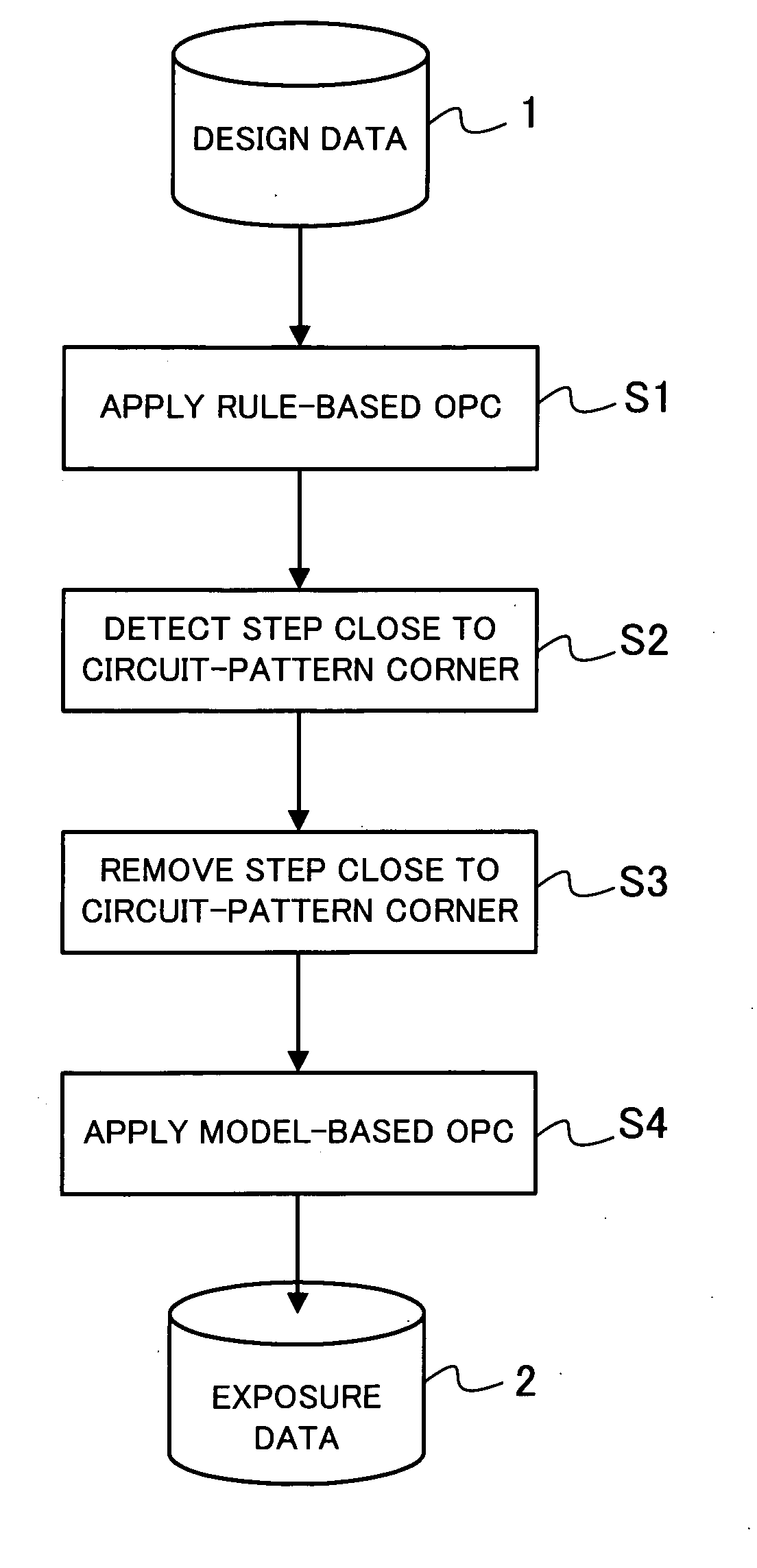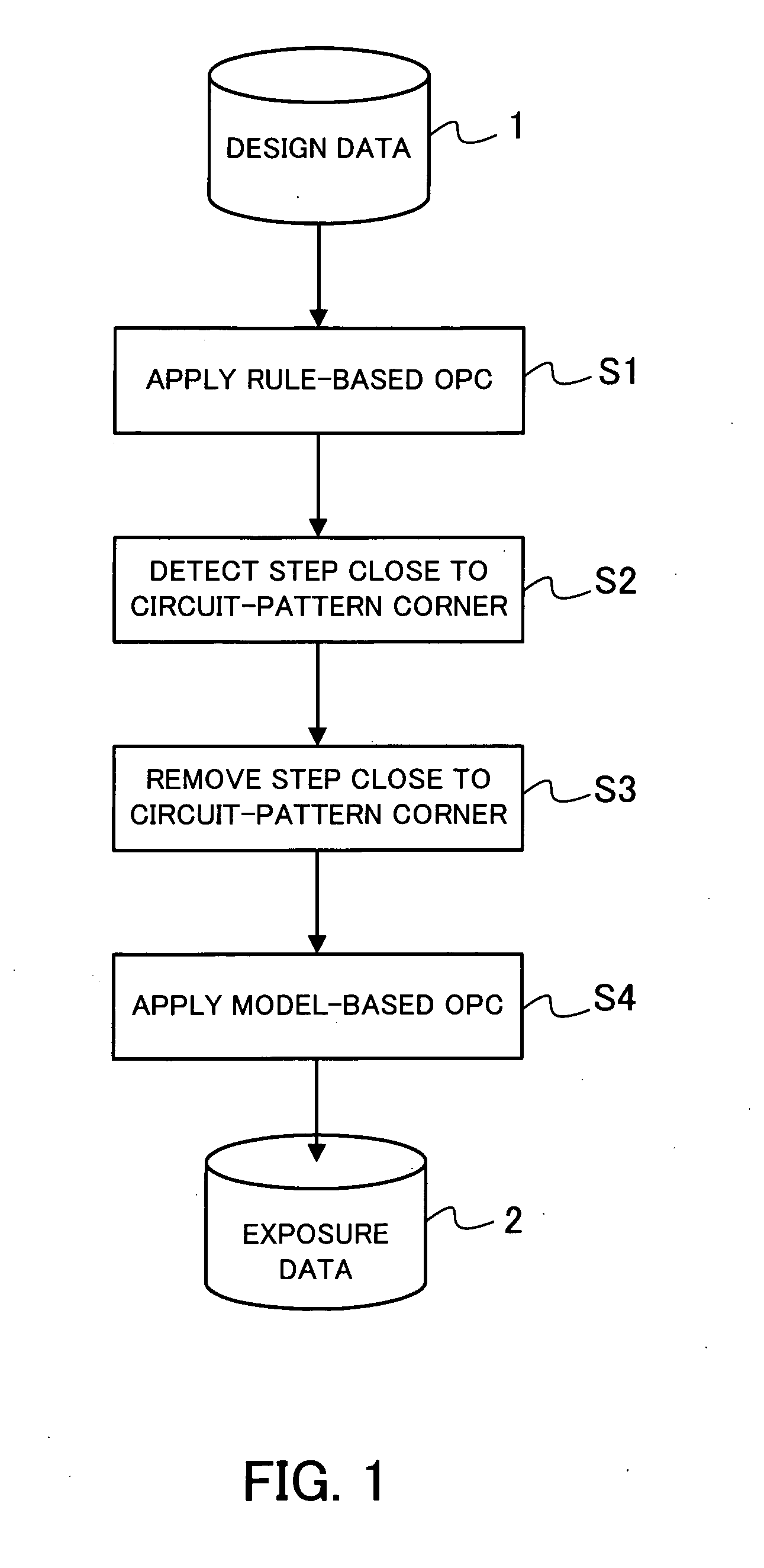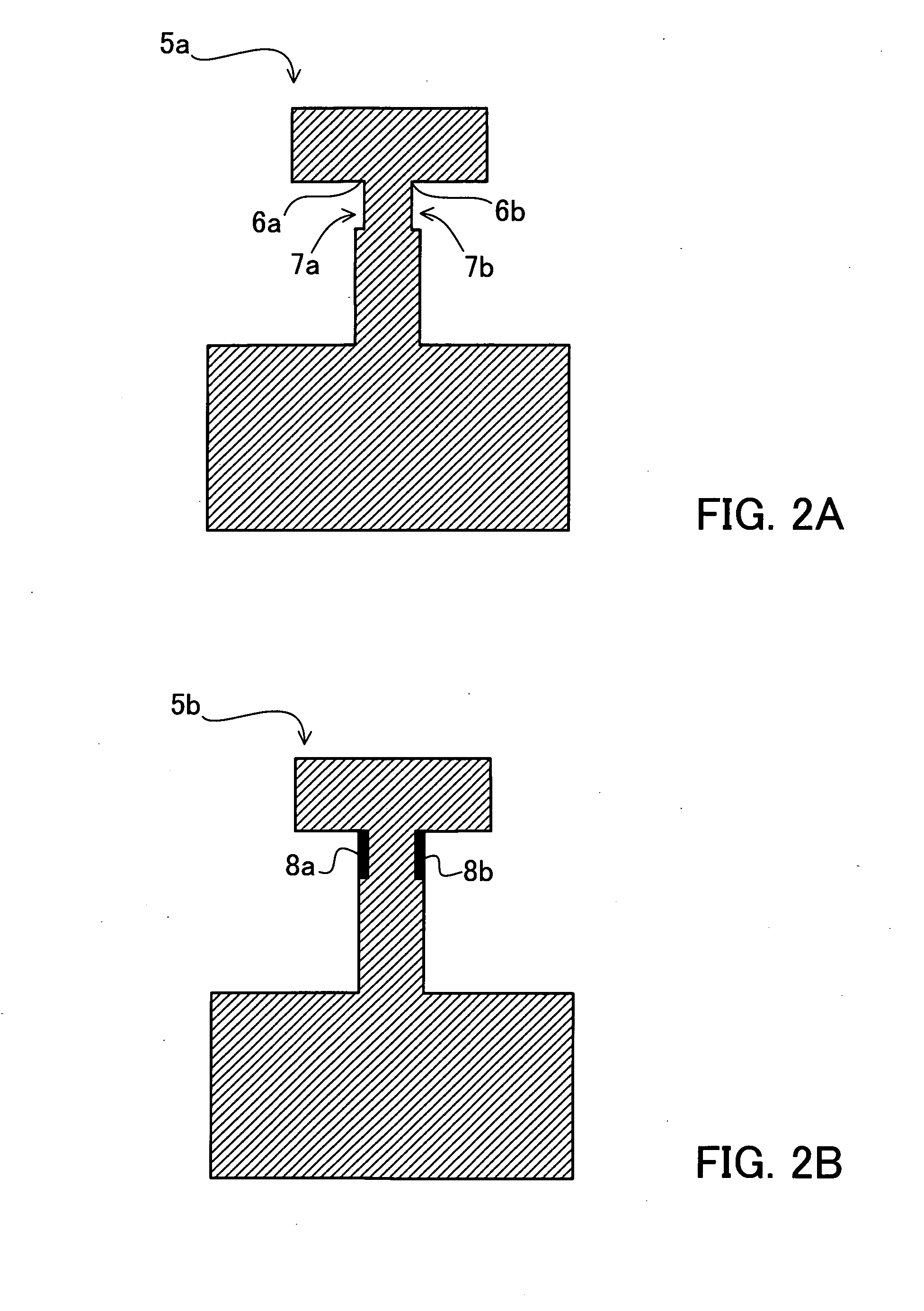Circuit-pattern-data correction method and semiconductor-device manufacturing method
a technology of circuit-pattern data and manufacturing method, which is applied in the direction of photomechanical treatment originals, instruments, photomechanical equipment, etc., can solve the problems of broken lines, difficult to correct factors, etc., and achieve the effect of preventing excessive correction
- Summary
- Abstract
- Description
- Claims
- Application Information
AI Technical Summary
Benefits of technology
Problems solved by technology
Method used
Image
Examples
Embodiment Construction
[0039]Embodiments of the present invention will be described below by referring to the drawings.
[0040]FIG. 1 is a flowchart showing an outline of a circuit-pattern-data correction method according to an embodiment of the present invention.
[0041]In the circuit-pattern-data correction method according to the present embodiment, proximity-effect correction based on rule-based OPC is applied in step S1 to design data 1 of a photomask such as a reticle or of a circuit pattern formed on a wafer.
[0042]The rule-based OPC corrects the input design data 1 by using a correction table. The correction table specifies the amount of correction according to the width of a circuit pattern and the distance to an adjacent circuit pattern. For example, when the distance from a target circuit pattern to an adjacent circuit pattern is a predetermined distance or more, the width of the target circuit pattern is made thicker, or when an adjacent circuit pattern is located close, the width of the target cir...
PUM
| Property | Measurement | Unit |
|---|---|---|
| width | aaaaa | aaaaa |
| width | aaaaa | aaaaa |
| length | aaaaa | aaaaa |
Abstract
Description
Claims
Application Information
 Login to View More
Login to View More - R&D
- Intellectual Property
- Life Sciences
- Materials
- Tech Scout
- Unparalleled Data Quality
- Higher Quality Content
- 60% Fewer Hallucinations
Browse by: Latest US Patents, China's latest patents, Technical Efficacy Thesaurus, Application Domain, Technology Topic, Popular Technical Reports.
© 2025 PatSnap. All rights reserved.Legal|Privacy policy|Modern Slavery Act Transparency Statement|Sitemap|About US| Contact US: help@patsnap.com



